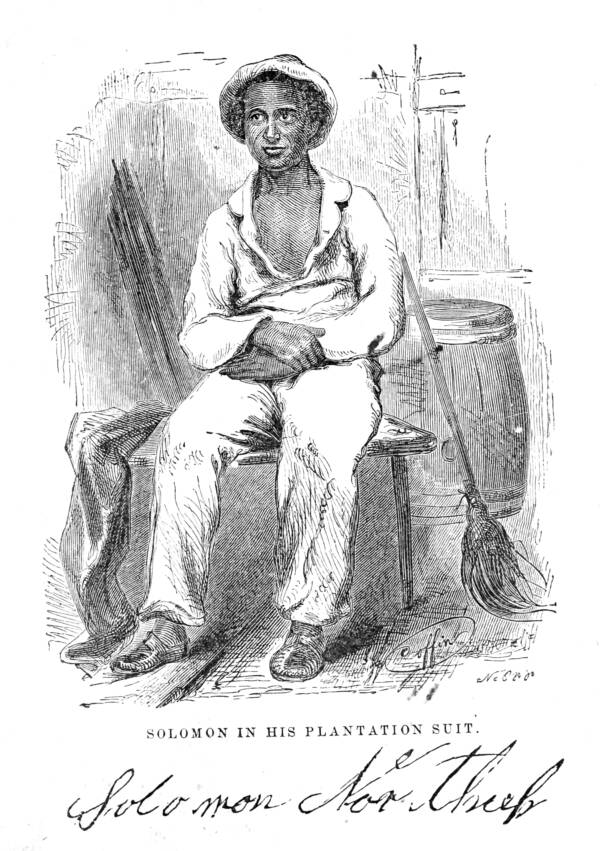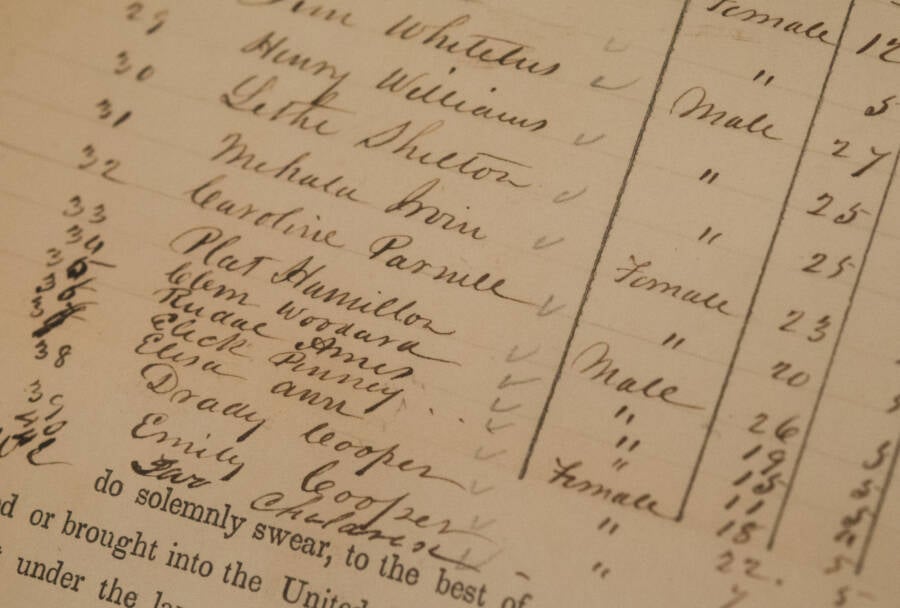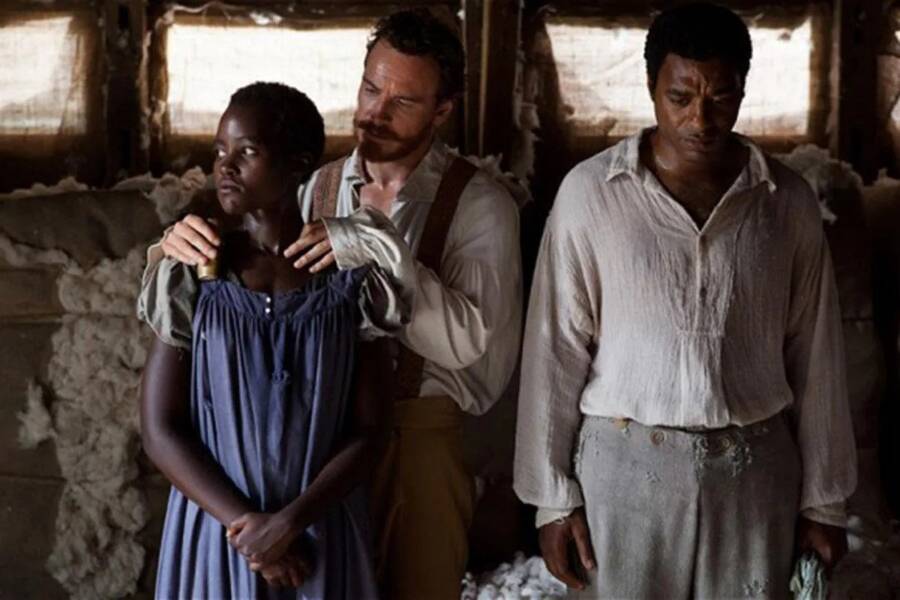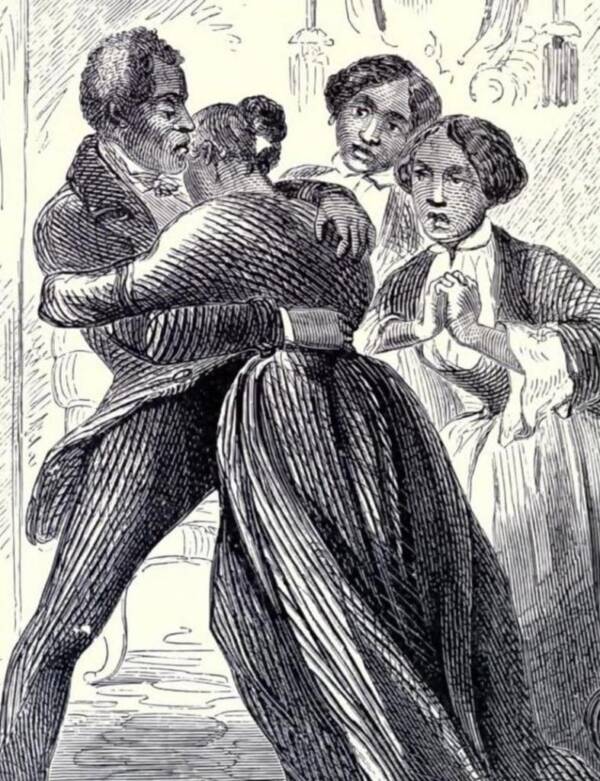Born in upstate New York, Solomon Northup was abducted as an adult and sold into slavery in Louisiana — and then he wrote 12 Years a Slave about his experience.

Interim Archives/Getty ImagesAn illustration of Solomon Northup from 1859, which originally appeared in the book Twelve Years a Slave.
In 2013, movie audiences flocked to see 12 Years a Slave, which told the powerful story of a free Black man kidnapped from the North in the 19th century and sold as a slave in the South. But though the film is a product of Hollywood, its protagonist, Solomon Northup, was very real.
Just like in the film, Northup was living as a free Black man when he was kidnapped, shipped to Louisiana, and sold into slavery. He spent 12 desperate years in servitude, an experience he later described in his 1853 book, Twelve Years a Slave: Narrative of Solomon Northup, a Citizen of New-York, Kidnapped in Washington City in 1841, and Rescued in 1853.
Northup’s descriptions of his kidnapping, brutal enslavement, and dramatic rescue shocked audiences across the country and quickly outsold works by white writers like Henry David Thoreau, Walt Whitman, and Ralph Waldo Emerson. “Its truth,” noted Frederick Douglass, “is stranger than fiction.”
Indeed, Solomon Northup’s true story is somewhat different than what 12 Years a Slave suggests.
From Freedom To Bondage
Born in 1807 or 1808 in Minerva, New York, Solomon Northup (portrayed by Chiwetel Ejiofor in the film) spent the first part of his life free. His father, Mintus, had been enslaved but was freed upon his master’s death, and Northup spent his childhood free to use his leisure time to read books or play the violin, his “ruling passion.”

Fox Searchlight12 Years a Slave accurately depicts Solomon Northup’s passion for the violin, though some historians say the film exaggerates his level of prosperity for dramatic purposes.
Able to marry who he chose, Northup wed Anne Hampton, a mixed-race woman, in 1828. They had three children together and lived a life that Northup called “comfortable” though not prosperous.
Though far removed from southern slavery, Northup occasionally encountered enslaved Black people who passed through the United States Hotel, where he worked, some of whom asked for his help.
“Almost uniformly I found they cherished a secret desire for liberty,” Northup later wrote. “Some of them expressed the most ardent anxiety to escape and consulted me on the best method of effecting it.”
But Northup felt far away from that world. “Having all my life breathed the free air of the North… I possessed the same feelings and affections that find a place in the white man’s breast,” Northup wrote, noting that he had “an intelligence equal to that of some men, at least, with a fairer skin.”
Soon, however, Northup would be forcibly wrenched away from the free air of the North — and smuggled into slavery in the South.
The Kidnapping Of Solomon Northup

Sarah L. Voisin/The Washington Post via Getty ImagesSolomon Northup’s captors changed his name to Plat Hamilton, seen here on the manifest (#33) of the ship that brought him South in 1841.
In 1841, Solomon Northup crossed paths with two men who called themselves “Hamilton” and “Brown.” As BlackPast reports, Northup was looking for employment in Saratoga Springs, New York, when the two men invited him to play his violin in New York City. Then, they insisted that he accompany them for a circus job in Washington, D.C.
“They promised me a situation and high wages if I would accompany them,” Northup explained in his memoir. “Largely did they expatiate on the advantages that would result to me, and such were the flattering representations they made, that I finally concluded to accept the offer.”
But “Hamilton” and “Brown” were not who they appeared to be. Once they were in D.C. — where slavery was legal — they drugged Northup, who awoke to find himself in “utter darkness, and in chains.”
“Then did the idea begin to break upon my mind, at first dim and confused, that I had been kidnapped,” Northup explained in his memoir. “But that I thought was incredible. There must have been some misapprehension — some unfortunate mistake.”
To his horror, Northup quickly learned that his imprisonment was anything but a mistake. When he insisted to his white captor that he was free, his captor and another man brutally beat him.

Public DomainSolomon Northup’s captors brutally beat him for insisting that he was free, just as they did in the film.
“Blow after blow was inflicted upon my naked body,” Northup recounted. “When his unrelenting arm grew tired, he stopped and asked if I still insisted I was a free man. I did insist upon it, and then the blows were renewed, faster and more energetically, if possible, than before.”
Soon, Northup was put on a ship to Louisiana. Just like in the film, he and other Black men hatched a plan to take over their vessel and escape. But here, Northup’s book and the movie based on his life differ somewhat.
In 12 Years a Slave, their plan is thwarted after one of the men is killed defending a woman from rape. In reality, according to Slate, their escape plan withered after one of the men died of smallpox.
With no other options, Northup settled in to await his fate in the South.
12 Years As A Slave
After the long journey by ship, Solomon Northup found himself in New Orleans, where he witnessed the heartbreaking separation of a woman named Eliza from her two children. And just like in the film, Northup and Eliza were both purchased by the same man, William Ford (portrayed by Benedict Cumberbatch).
But Northup’s recollection of his time in bondage does differ from the movie in some ways. For example, the film highlights Ford’s hypocrisy by showing him reading a Christian sermon over the heartbroken screams of Eliza. But Northup had nothing but good things to say about the man.
“[T]here never was a more kind, noble, candid, Christian man than William Ford,” Northup recounted in his memoir. “[He] was a model master… and fortunate was the slave who came to his possession.”

Fox SearchlightSolomon Northup’s first enslaver is depicted somewhat differently in the Northup’s memoir and the movie.
Despite Ford’s apparent kindness, Northup didn’t stay with him for very long. Just as the film depicts, Northup clashed with a cruel overseer named John Tibeats (Paul Dano) and was then sold to a much more brutal enslaver, Edwin Epps (Michael Fassbender).
From that point on, Northup was enslaved by Epps. He’s depicted as sinister in 12 Years a Slave, but Epps was actually much crueler than the film suggests. Epps not only had “dancing moods” in which he forced enslaved people to dance but “whipping moods” as well.
Worst of all, Epps had “lewd intentions” toward a young enslaved woman named Patsey (Lupita Nyong’o). Though the film delves into Epps’ desire for Patsey in detail, Northup is more subtle about it. Both accounts, however, agree that Epps’ attraction for Patsey incited the ire of his wife and led to Patsey’s vicious whipping.
Indeed, one of the most horrifying scenes in Northup’s memoir — and in 12 Years a Slave — is when Epps forces Northup to whip Patsey, who has been stripped and bound to stakes in the ground.

Fox SearchlightLupita Nyong’o as Patsey in 12 Years a Slave.
“Nowhere that day, on the face of the whole earth, I venture to say, was there such a demoniac exhibition witnessed as then ensued,” Northup later recalled. He tried to stop the beating, only to have Epps grab the whip from his hand and continue to strike Patsey until the “lash was wet with blood, which flowed down her sides and dropped upon the ground.”
Patsey did not ask Northup to help her end her life, as she does in the movie, but he did write in his memoir that the whipping seemed to break her. “If ever there was a broken heart — one crushed and blighted by the rude grasp of suffering misfortune — it was Patsey’s,” Northup said.
But Northup’s own misfortune would soon come to an end. After more than a decade enslaved, a chance encounter in the 1850s led to his release.
How Solomon Northup Escaped Slavery
After 12 years as a slave, Solomon Northup found himself a free man in 1853. And the sequence of events that led to his release is fairly similar between his memoir and the movie. Both hinge on a man named Bass (Brad Pitt).

Fox SearchlightBrad Pitt as Bass, the Canadian abolitionist who helped free Solomon Northup.
As Northup tells it, Bass was a Canadian man who’d lived in Louisiana for a couple of years. While listening to a conversation between Bass and Epps, Northup learned that Bass was against slavery — which he called “a sin, a fearful sin, resting on this nation” — and decided to approach him.
“Now was the time, if ever, to broach the subject and I resolved to do it, and submit to whatever consequences might ensue,” Northup recounted of the moment that he found himself alone with Bass. The two men started to talk, and Northup eventually revealed the truth. Bass agreed to help him.
In fact, Slate reports that Bass did more for Northup than the movie suggests. He wrote multiple letters for Northup and even offered to travel to New York on his behalf. Their plan for Northup’s release took much longer than in the movie. But in 1853, it finally worked.

Public DomainA depiction of Solomon Northup’s reunion with his family. Sadly, his daughter Margaret didn’t recognize her father.
BlackPast writes that Henry B. Northup, a relative of Northup’s father’s former owner, the governor of New York, and a Louisiana senator all helped locate and release Northup from slavery that year.
And with that, Northup steadily made his way back to New York. “My heart overflowed with happiness as I looked around upon old familiar scenes, and found myself in the midst of friends of other days,” Northup later wrote, though he also acknowledge the heartbreak of meeting his daughter, Margaret, who didn’t recognize him after 12 years apart.
But Solomon Northup’s story didn’t end there. In fact, his final chapters are something of a mystery to historians today.
What Happened To Solomon Northup?
In the aftermath of his escape, Solomon Northup achieved great fame after publishing his memoir (as told to David Wilson) Twelve Years a Slave: Narrative of Solomon Northup, a Citizen of New-York, Kidnapped in Washington City in 1841, and Rescued in 1853. During a time when abolitionists were seen as fringe characters, it offered Americans across the nation a stunning and intimate look into the life of an enslaved person.

The New York Times Historical ArchiveAn article from The New York Times about Solomon Northup’s kidnapping.
But Northup’s kidnappers Brown and Hamilton — whose real names were Alexander Merrill and Joseph Russell, according to HISTORY — were never punished. Northup’s case was tried in Washington, D.C., where Black people had no legal rights.
And Northup himself eventually faded from the public record. His wife’s obituary later listed her as a widow, but there’s no record of when, where, or how Northup died. In fact, some rumors suggest that he actually was kidnapped again and sold South.
His final days may be murky, but Northup certainly made a contribution during his life. His stirring memoir presented a potent argument against slavery — roughly a decade before the Civil War — at a time when many Americans were happy to turn a blind eye to the practice.
“I have no comments to make upon the subject of Slavery,” Solomon Northup wrote at the end of his memoir. “Those who read this book may form their own opinions of the ‘peculiar institution…’ This is no fiction, no exaggeration. If I have failed in anything, it has been in presenting to the reader too prominently the bright side of the picture.”
After reading about Solomon Northup, go inside the true story of the Mississippi county that seceded from the Confederacy, as seen in the 2016 film “Free State of Jones.” Or look through these colorized Civil War photos.





